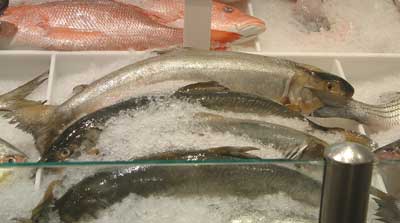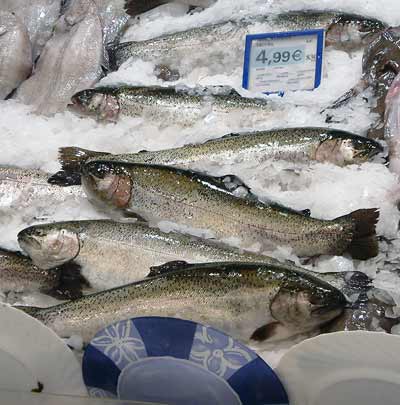Red and rosé wines from Puglia, made around the town of Salice Salentino mainly from Negroamaro grapes. After one year of aging, rosé wines may be labelled "Prodotto invecchiato".

Char(r) usually refers to the Arctic char, an uncommon freshwater fish of the same family as salmon, trout and related to grayling and the vendace or powan. It is found in rivers and lakes of northern Europe, north western United States and Canada and in the Great Lakes. They are migratory fish, like salmon and trout. They have a steely blue-grey back with salmon-pink speckles on the sides and a red underbelly. They have sweet firm flesh which varies from white to pink, dependent upon its own diet, and with good flavour, some say better than trout, being something like a cross between trout and salmon.

Char(r) usually refers to the Arctic char, an uncommon freshwater fish of the same family as salmon, trout and related to grayling and the vendace or powan. It is found in rivers and lakes of northern Europe, north western United States and Canada and in the Great Lakes. They are migratory fish, like salmon and trout. They have a steely blue-grey back with salmon-pink speckles on the sides and a red underbelly. They have sweet firm flesh which varies from white to pink, dependent upon its own diet, and with good flavour, some say better than trout, being something like a cross between trout and salmon.

Trout caught in a spring or stream. Commonly this is the brown trout. It is often thought that there are multiple species of trout; brown, speckled, brook and river and so on. In fact they are all one, with the exception of the rainbow trout, and the differences in pattern are owing to environmental variations. The sea trout is a trout which spends a couple of seasons at sea, eating small crustaceans which make it a pink colour. They are all the same fish. The name simply comes from where it is caught or its appearance (which may be affected by its diet). It is coarser-fleshed than salmon.
A rich, soft, buttery, curd cheese called Aostin from the Valle d'Aosta in north western Italy, which, when washed in brine and matured for 3 months may be known as Salmistra.